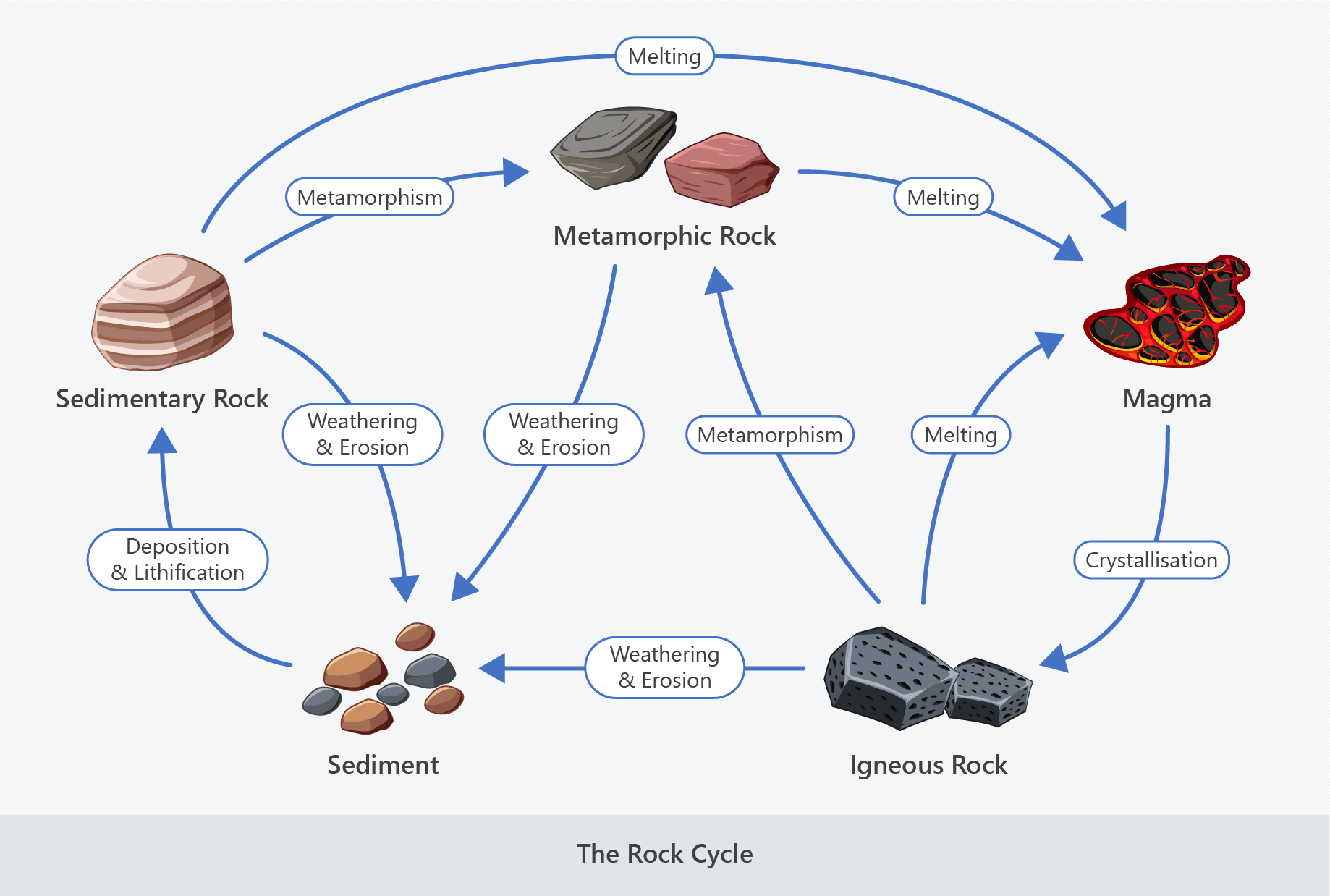2 | The Lithosphere
The Lithosphere
- The lithosphere (also known as the geosphere) is Earth’s solid outer layer consisting of the crust and upper mantle.
- The lithosphere is divided into large fragments known as tectonic plates which move independently as a result of being dragged by convection currents in the underlying asthenosphere.
- Tectonic plate boundaries are associated with geological events such as earthquakes and volcanoes, as well as geological formations such as mountain ranges, rift valleys and ocean trenches.

The lithosphere incorporates the crust and upper mantle.
- The lithosphere is composed mostly of silicates (minerals containing silicon and oxygen), which account for about 75%.
- The remaining 25% is mostly made up of just six metals – aluminium, iron, calcium, sodium, potassium and magnesium.
- The lithosphere is composed of three main types of rock – igneous, sedimentary and metamorphic rock – which are connected by a series of processes known as the rock cycle.
- Processes that make up the rock cycle include:
- Melting of rock to form magma.
- Crystallisation (solidification) of magma to form igneous rock.
- Weathering and erosion of rock to form sediments.
- Deposition and lithification of sediments to form sedimentary rock.
- Metamorphism of pre-existing rock to form metamorphic rock.
- The outermost region of the lithosphere consists of a thin layer of soil, which is a mixture of minerals (~45%), water (~25%), air (~25%) and organic matter (~5%).
- Soil is sometimes categorised as its own sphere, known as the pedosphere.

The rock cycle is a series of processes linking the different types of rock in Earth’s lithosphere.
(Images: blueringmedia, Adobe Stock)
Quizzes

